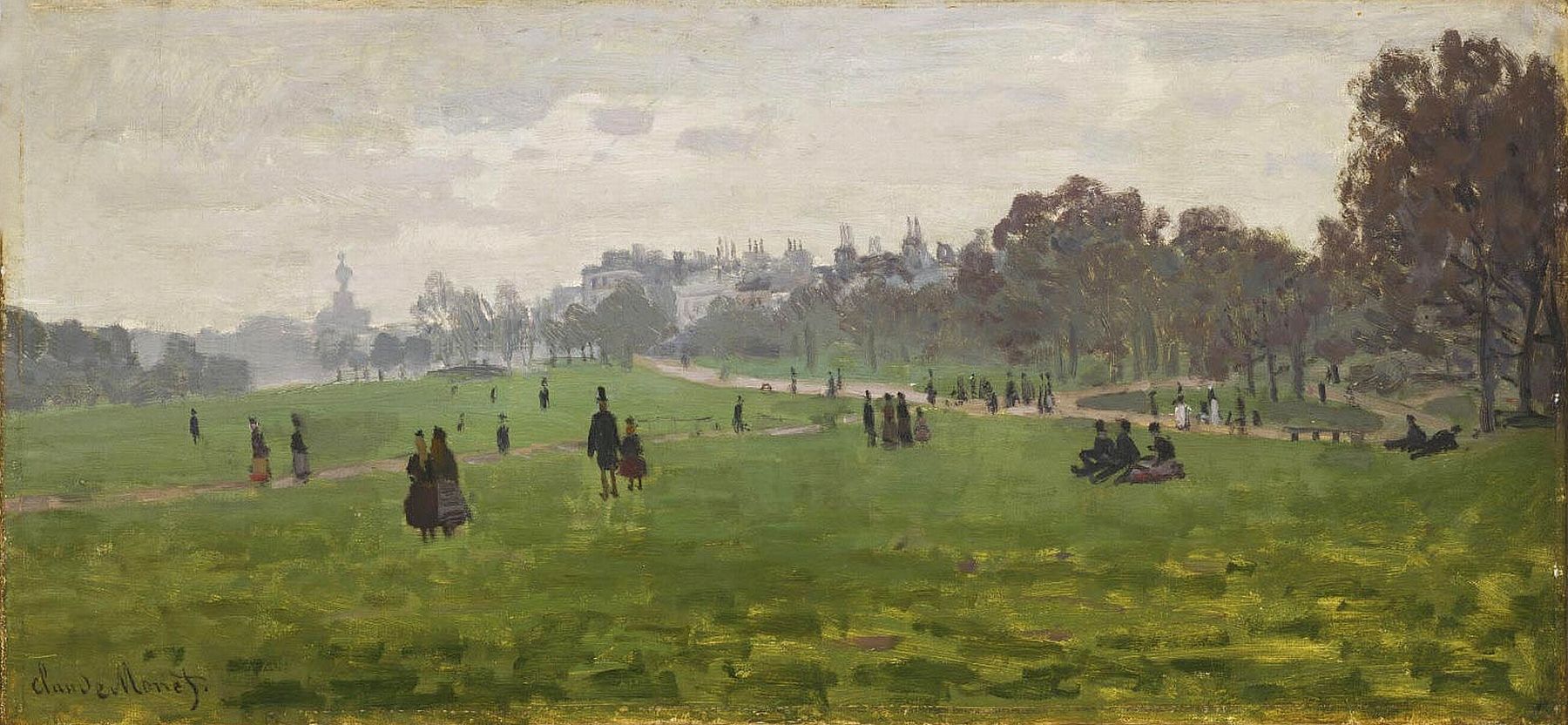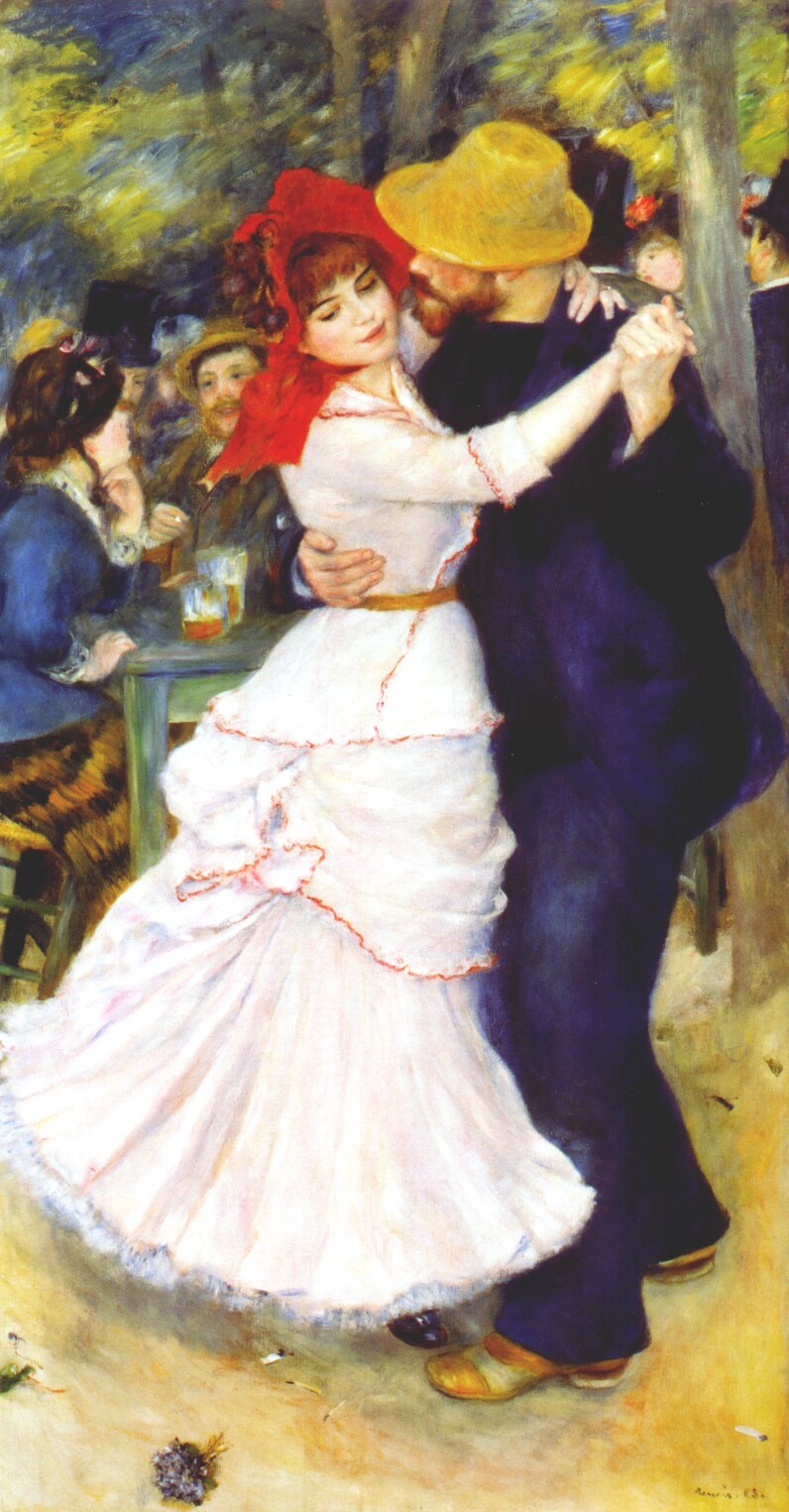From an excellent article in the Irish Times: (Read the whole thing, please!)
In one of the ironies of art
history, the great French art dealer Paul Durand-Ruel “discovered”
Impressionism in London in January 1871 because he, Claude Monet and Camille
Pissarro had sought refuge there from the Franco-Prussian war…
With its muddy grass, grey but
luminous sky and barely sketched, dark silhouetted figures,
Monet’s Green
Park, painted during his year of exile, still embodies London. Green
Park is one of more than 90 works either owned or traded by Durand-Ruel
that are on exhibition at the Musée du Luxembourg in Paris.
The same exhibition will travel to
the National Gallery in London in March 2015, then to the Philadelphia Museum
of Art from late June…
Back in Paris after the war, Monet
and Pissarro introduced Durand-Ruel to Degas, Renoir and Sisley. “Durand-Ruel
was a missionary,” Renoir said. “Fortunately for us, painting was his
religion.”
“Without Durand, all of us
Impressionists would have starved,” said Monet. “We owe him everything. He was
stubborn, persistent. He risked bankruptcy many times to support us. The
critics dragged us through the mud, but it was much worse for him! They wrote,
‘These artists are mad, but the dealer who buys them is more mad than they
are’.”
Durand-Ruel was a monarchist and
devout Catholic. Widowed at 40, he raised five children alone, and gambled
everything on Impressionism. In a country politically polarised since the
revolution, he was broadminded enough to support the communard Courbet, the
anarchist Pissarro and the republican Manet.
Between 1891 and 1922, Durand-Ruel
purchased some 12,000 paintings, including 1,500 Renoirs, 1,000 Monets, 800
Pissarros and 400 works by Degas, Sisley and Mary Cassatt. In January 1872, he
purchased 23 paintings by Manet, the artist’s first significant sale…
Monet’s Woman Reading, or Spring,
in which the painter’s wife, Camille, sits beneath a tree with her skirts
spread around her, was shown in the 1876 exhibition. The painting was purchased
by the American Impressionist Mary Cassatt and now belongs to the Walters Art
Museum in Baltimore. Emile Zola described it as a “portrait of a woman dressed
in white, sitting in the shadow of foliage, luminous patches dappling her dress
like drops of water”….
The exhibition at the Musée du
Luxembourg will also go down in history, as a long overdue tribute to the man
who broke the monopoly of the Académie des Beaux Arts and the official salon,
and attained recognition for Impressionism. Without Durand-Ruel, the coherence
of Impressionism as a movement might not have been appreciated…
It is fitting that the exhibition
opens with portraits of Durand-Ruel and his five children by Renoir:
Pierre Auguste Renoir French, (1841–1919) The Daughters of Durand-Ruel, 1882. Oil on canvas
Charles and Georges Durand-Ruel
Pierre-Auguste Renoir (1841–1919) Marie-Thérèse Durand-Ruel Sewing, 1882.
Durand-Ruel waited until he was 69 years old, successful and serene, before
sitting for his portrait.
The exhibition closes with three
exquisite dance paintings by Renoir: two from the Musée d’Orsay and one from
the Boston Museum of Fine Arts. They show Renoir at his best, as the painter of
happiness.
Dance at Bougival is one of the Boston Museum’s most prized
paintings and is rarely loaned, so this is a rare chance to see his three
variations on a theme, side by side.






